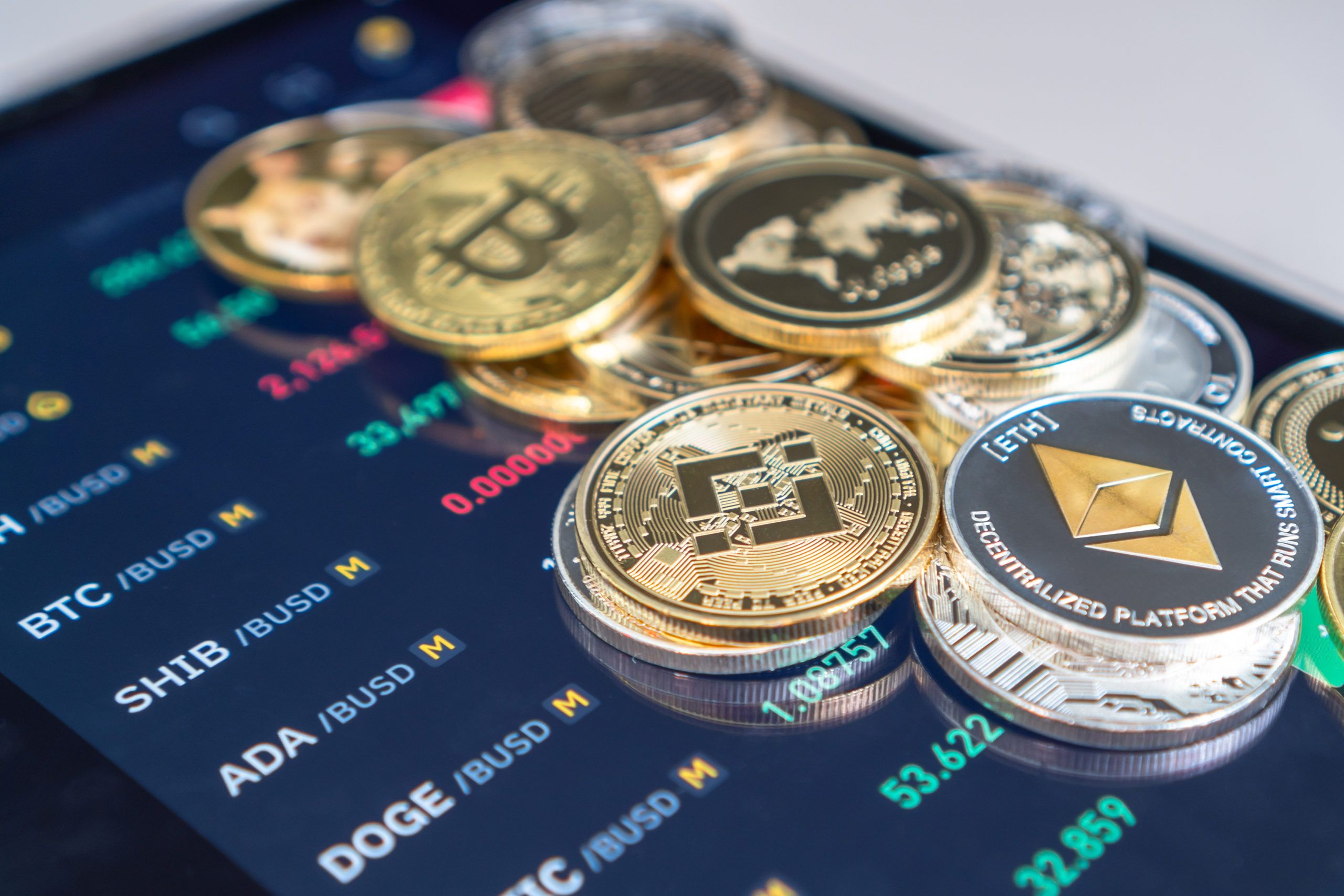One of the best characteristics of cryptocurrency is that it’s decentralized. Decentralized finance, (DeFi) has caught the eye of many traders. Liquidity pools are a main component of a DeFi, or a DEX (decentralized exchange) platform. Liquidity pools stabilize the DEX market. Without them, the entire system falls apart.
With the right technique, you can make passive income from liquidity pools.If you’re interested in cryptocurrency or starting your trading journey, you’re in the right place. This guide will explain the function of liquidity pools and how they make money in clear terms. Read on and find out how you can use liquidity pools to make a profit and start investing!
What Is a Liquidity Pool?
A liquidity pool is a collection of crowdsourced cryptocurrency or tokens. Traders, often called Liquidity Providers (LPs), contribute to liquidity pools. They do so by using a decentralized exchange (DEX) platform. One popular example is the DEX Uniswap and the blockchain Ethereum. Liquidity pools exist within a DEX, and all trades of asset pairs go through them.
The DEX locks all the crypto in a liquidity pool in smart contracts. Whenever you exchange crypto, the system creates a new smart contract for the trade. It allows for seamless and quick peer-to-peer transactions. A DEX requires no third-party interference or paperwork. Code makes up the entirety of a smart contract. When you engage in a transaction, the code is sent to the DEX consensus mechanism.
A consensus mechanism checks that the code is valid and can be added to the blockchain. The most common consensus mechanisms are proof of work (PoW), proof of stake (PoS), and proof of authority (PoA). The popular cryptocurrency bitcoin uses proof of work. Ethereum, another popular crypto, uses proof of stake. Different traders might prefer different consensus mechanisms. Each one has its method of trading.
The kind of DEX system using liquidity pools is an automatic money maker (AMMs). The process of the exchange is permissionless and almost entirely automatic. All the LPs need to do is input the information for their trades.
During a trade, you won’t have to engage with the other trader directly. The smart contract will do all the communication for you. This means that at no point will your digital wallet face an outside risk. Neither authority nor another trader will be able to even attempt manipulation. The consensus mechanism, smart contract, and liquidity pools work together to keep the network secure.
What Do Liquidity Pools Do?

Liquidity pools keep the decentralized exchange stable by preventing slippage. When the market becomes volatile, the value of cryptocurrency can fluctuate. Slippage is the difference between a crypto’s expected price and the market value. In a market with too little liquidity, favorable prices are hard to maintain. This makes it even harder for traders to make a profit.
By trading through liquidity pools, LPs enjoy stable prices and fast transactions. Liquidity pools also incentivize LPs with several rewards. LPs can receive liquidity pool tokens, trading fees, and even extra crypto. Liquidity providers can swap or burn LP tokens for increased crypto value. These rewards are usually proportional to the number of liquidity LPs contribute.
A constant product formula keeps the values of liquidity pools relative to each other. This maintains stability throughout the DEX. This formula makes sure two assets in trade will always equal the constant when multiplied.
The concept of decentralized finance becomes much more tangible with liquidity pools. A centralized exchange requires many people to keep liquidity stable and execute trades. Liquidity pools can keep a market from becoming illiquid. It does this even with a smaller volume of traders.
Another risk includes the use of smart contracts. Liquidity pools and AMMs (automated money makers) rely on smart contracts to execute trades. If someone bugs or exploits the smart contract, the trader might lose the funds in that exchange. It’s important to note this is a risk taken when using any decentralized exchange platform. It doesn’t occur on just ones with liquidity pools.
It is very unlikely that someone hacks or manipulates a smart contract. To be safe, you can watch out for certain red flags. These include platforms that use an admin key or give privileged access to specific traders.
Are Crypto Liquidity Pools Safe?
Yes, liquidity pools are safe. Cryptocurrency liquidity pools remove a lot of the risks that centralized exchanges have. Even other methods of crypto exchanges lack in many areas that liquidity pools excel in. Speed, confidentiality, security, and profitability are all liquidity pool advantages.
Like with any financial investment, though, there are still risks to consider and be aware of. During extreme market fluctuations, liquidity pools run the risk of impermanent loss. This is when the price of assets you deposit into a liquidity pool decreases. Let’s say that the other asset in the pool is a stablecoin, and your asset is more volatile.
Within this pool, the liquidity going out must stay equal. When the crypto’s value decreases significantly, a gap forms between the two assets. The liquidity pool still has to ensure the liquidity ratio balances out. Everyone will now have to purchase the stablecoin at a lower price until the gap closes.
This means traders investing in this pair might end up with more of the crypto and less of the stablecoin. They also might have missed out on the opportunity to exchange what they had, then buy the stablecoin. This loss is called impermanent for a reason.
If a liquidity provider takes out its crypto before its value has increased, it will lose out on making more profit. That is when the loss becomes permanent. You can also still receive rewards from other liquidity pool trading pairs until the balance is restored.
Despite this risk, liquidity pools are still considered very safe. In any other situation, they are highly profitable. Less volatile liquidity pools are less likely to face impermanent loss. It’s important to use risk management strategies before investing in any crypto.
As a beginner crypto trader, you can invest in more stable liquidity pools with fewer rewards at first. Use them to get a feel of your strategy and how the market functions. Then, look into the rewards and volatility of more incentivized liquidity pools.
Crypto Liquidity Providers vs Crypto Exchange (Order Book)
Liquidity pools are not the only method of keeping a market saturated with liquidity. Order books are a more traditional method. In a cryptocurrency market, order books are often used to keep records of exchanges. You might wonder what the difference is between a liquidity pool and an order book. After all, liquidity pools also record transactions with smart contracts.
How Does an Order Book Work?
An order book is an electronic list of all the transactions made for a specific asset or security. In this case, an order book would record all the crypto trades made on a DEX or other platform. Before the concept of decentralized finance, order books were the most common trading model.
Order books categorize transactions by the level of price. They can be easily accessed with any device and an Internet connection. You can then search for a specific price range and view the entire history of buy and sell orders for the crypto. Buy orders can also be called bids, and sell requests are asked.
Traders use order books to match with a buyer or seller. Simply put out a request to sell or a bid to buy. A trader can also use the order book to make more informed decisions. An order book’s biggest advantage is that it provides transparency on trading data to the blockchain. This allows traders to make informed decisions.
Liquidity pools lack this feature. Instead, LPs rely on the constant product formula and a pricing algorithm to set prices. This doesn’t mean order books are without fault. If a market is illiquid, an order book won’t find good matches. This results in bad trades and money lost.
Order books are also more susceptible to manipulation. The method gives many opportunities for bad-faith actors to input false data. Enough data manipulation in the market lures traders into crypto scams. Pump-and-dump schemes are one example. The traders on an order book are anonymous, so it’s difficult to find and punish schemers.
Similarly, a broker can exploit order book information for their good. This is front-running; when a person acts on private information to the detriment of others. Order books are open to the public and it is difficult to pull off a front-running operation. Still, there were several instances of this happening, which put many traders off from using order books.
Making Money With Crypto Liquidity Pools
Can you make money with crypto liquidity pools? That’s the million-dollar question (no pun intended). Liquidity pools provide incentives to get LPs to use them. Some liquidity pools have bigger rewards than others. By participating in them, a trader can receive more LP tokens, trading fees, and crypto assets.
This optimized method of trading is liquidity mining. This is when a trader makes the maximum possible profit on in-pool fees. Whenever a crypto liquidity provider trades within a liquidity pool, they receive a fee on their contribution. By swapping or selling crypto in an incentivized pool, they can make back extra crypto.
Yield farming is another popular method of turning a profit. This is when traders lock up a stake of crypto on a blockchain. By holding the crypto instead of swapping it, the LP receives more token rewards. Farming rewards are usually distributed daily. A long-term stake will collect more tokens with time.
The higher the risk in a liquidity pool, the higher the reward. A liquidity provider can slowly build up its stakes in the most valuable asset pairs. These are also the most incentivized liquidity pools. You can still ensure that the risk you take is safe for your digital wallet.
There are even platforms like Yearn.Finance helps traders who want to use this method. Yearn.Finance will inform you of the risks in trading pairs. They automate calculating risk and return on investments. They will also move your crypto stake into the liquidity pools. This is to receive the best investment in the long term.
CURATED FROM:
Cerullo, Anthony. What Are Liquidity Pools and How Do They Make Money?. 15 Aug, 2022, https://www.youhodler.com/blog/liquidity-pools-defi.






